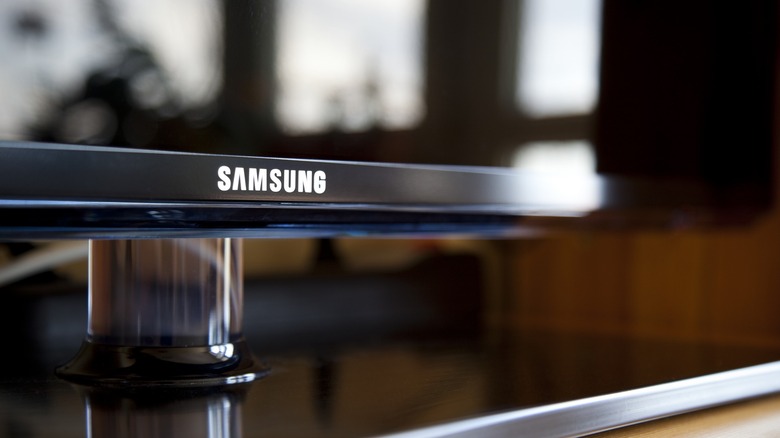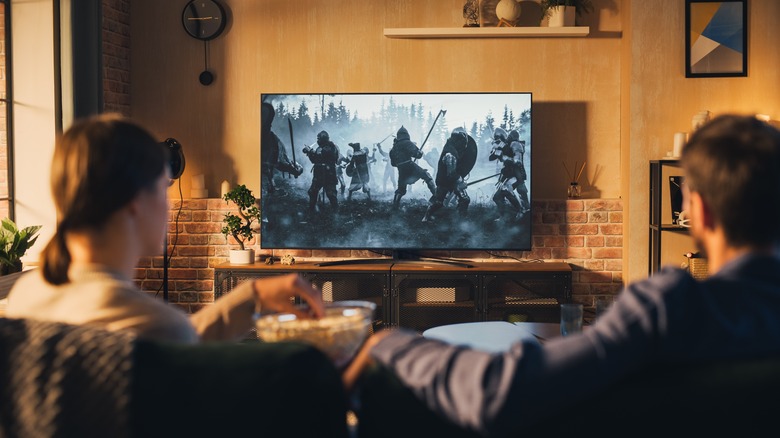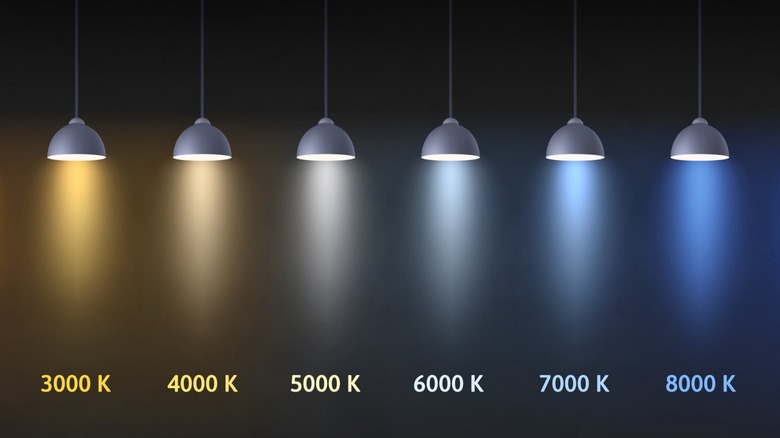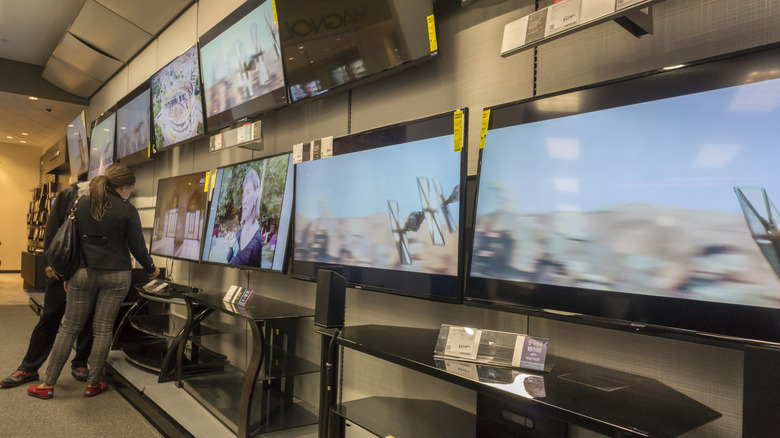4 Picture Settings To Optimize Your Samsung TV For Watching Movies
We may receive a commission on purchases made from links.
Samsung offers some of the highest quality smart TVs on the market with stunning displays and 4K resolution. But with the wrong display settings, you won't be able to fully capture the brilliance for immersive viewing. With the best picture settings enabled on your Samsung TV, you'll be able to watch movies with crystal-clear quality, so you can lose yourself in the action.
While the default settings are satisfactory for the most part, there are some crucial features that can instantly enhance your movie-viewing experience. The best part is that most of these settings will only take you a few seconds to apply.
If you recently purchased a Samsung TV and are wondering why the image quality isn't living up to the in-store models, it may be because you have the wrong display settings enabled. So, let's explore how to adjust these hidden features on your Samsung smart TV for the best movie-watching experience.
Use the Movie picture mode
When first purchasing your Samsung TV, the picture mode will automatically be set to the Standard setting. While this offers a reasonable overall viewing experience, it isn't fully optimized for watching movies. The same applies to Dynamic mode, which often displays exaggerated colors. It may look good while watching David Attenborough's latest nature documentary, but it isn't the best choice when watching movies.
Samsung's Movie mode is designed to remove the exaggerated brightness and color from its Standard and Dynamic modes for a more realistic experience. It offers a dimmer view, ideal for watching movies in darker settings. It also uses a warmer color temperature, which is used by industry professionals.
To access the Movie picture mode, go to Settings, then All Settings on your Samsung TV. For 2022 and later models, you can access this page from the Quick Settings menu by holding the Home button. Next, select Picture, then go to Picture Mode to preview the display options.
Modify the color tone
If you use a Samsung device or other smartphone, you may have seen blue light filters that claim to hold health benefits. Warmer colors don't really affect the overall viewing experience on mobile, but what about on TVs?
The color temperature on your TV affects the overall appearance of the colors displayed. Measured using the Kelvin Color Temperature Scale, color temperature is described using two main categories: warm and cool. Unlike Sports and Vivid modes, which typically showcase cooler colors, movies are best viewed in warmer colors. The reasons for this are varied, but most importantly, warmer colors help create a more accurate representation of the settings and images used in movies as intended by directors.
Despite the pros of using warmer colors, many smart TVs are set to the blue-ish Neutral option by default. Thankfully, Samsung has been wise and made its Cool and Standard options only available in Dynamic mode. For aesthetic, warmer displays, you can choose between Warm1 (for medium strength) or Warm2 (for maximum strength). To access the color settings, go to All Settings and then navigate to Picture, then Expert Settings.
Adjust the picture in Expert Settings
Even after applying the previously mentioned settings, every TV will vary slightly based on the viewing environment. Using Expert Settings on your Samsung TV gives you the freedom to fine-tune your display to match your environment.
While some may not require adjusting, there are a few important settings you can change to create an optimal viewing experience. Backlight determines how much light is emitted from your TV. You can alter this setting depending on the time of day you're watching TV. Contrast impacts the darker and lighter aspects of your display. The contrast settings are typically adequate on most TVs, but you can raise the contrast if some of the on-screen elements aren't bright enough.
Samsung recommends a brightness level of around 50%, which is set by default. If it's set too dark, you'll lose detail in darker shots. Too high, and black and darker elements will appear too bright. Sharpness helps to define objects and their outlines on-screen. When correcting sharpness, lower is better, as high levels of sharpness will exaggerate shapes and outlines too much. You can find more settings, such as Auto Motion Plus, beneath Apply Picture Settings. While this feature is beneficial when watching sports, it's heavily recommended to turn off this feature for movies, as it's known to cause image quality issues.
Use a test image for proper calibration
For the best results, you can optimize your Samsung TV settings using benchmark graphics. These provide a useful framework for making effective adjustments for optimal image quality.
For 4K displays, you can grab a benchmark disc from Spears and Mill. The disc features dozens of test images that let you fine-tune your display to professional standards. On the Video Calibration menu, you'll find many of the same parameters found in Samsung TVs and similar models. The difference is that you'll have access to marked images to use as a reference so that you can accurately correct each setting.
If you're lucky enough to get ahold of one, some Blu-ray movies also include a built-in calibration program. Using one of these programs offers a definitive way to get your Samsung TV display set to industry standards, so you can sit back and enjoy movies how they were intended to be viewed.




